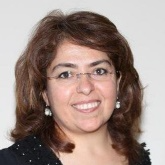International Journal of Modern Education and Computer Science (IJMECS)
IJMECS Vol. 13, No. 3, 8 Jun. 2021
Cover page and Table of Contents: PDF (size: 255KB)
Training Program Supporting Language Acquisition
Full Text (PDF, 255KB), PP.1-12
Views: 0 Downloads: 0
Author(s)
Index Terms
Language acquisition, parental training, Peabody Picture-Vocabulary Test, early childhood
Abstract
This study was conducted to evaluate the effects of a parenting training program that supports language acquisition in early childhood. To reveal such an effect, an experimental research design including pre-test-post-test and retention test was applied respectively. Experimental and control groups were formed with the parents of 4-6 years old children attending pre-school education institutions. To assess the language development levels of the children, Peabody Picture-Vocabulary Test (PPVT) was applied during the pre-test phase; after the parental training, a post-test was applied; and a year later, a retention test was implemented alternately. Parents in the experimental group evaluated the program after the Parental Support Program (PSP). The personal characteristics of the study group and the opinions of the parents evaluating the training have been shown by using the frequency and percentages. Whether PPVT and PSP scores differ according to socio-demographic variables was analyzed by t-tests. In the end, there was a significant increase in the results of the post-test and retention test performed after parent training that supports language acquisition. This increase has been found to be significantly higher than the PPVT scores of children in the control group. Thus, we have determined that the parents have a positive attitude towards the training program. The results of the study also reveal that parenting training that supports children's language acquisition has a positive effect on children's language development.
Cite This Paper
Hatice Yalcin, Murat Demirekin, " Training Program Supporting Language Acquisition", International Journal of Modern Education and Computer Science(IJMECS), Vol.13, No.3, pp. 1-12, 2021.DOI: 10.5815/ijmecs.2021.03.01
Reference
[1] May Y. Fan. “Frequency of Use, Perceived Usefulness, and Actual Usefulness of Second Language Vocabulary Strategies: A Study of Hong Kong Learners”, Modern Language Journal, Vol.87, No.2, pp.222-241, 2003.
[2] Nurcan Kocak, Busra Ergin, Hatice Yalcin. “60-72 Aylik Cocuklarin Turkçe Dil Kullanim Duzeyleri ve Etki Eden Faktorlerin Incelenmesi” [Examining the Turkish Language use Levels of 60-72 Month-Old Children and the Factors Affecting Them], KMU Sosyal ve Ekonomı̇k Arastirmalar Dergı̇si, Vol.16, No.2, pp.100-106, 2014.
[3] Natália Brunnet, Cristina Portugal,"Digital Games and Interactive Activities: Design of Experiences to Enhance Children Teaching-Learning Process", International Journal of Modern Education and Computer Science, Vol.8, No.12, pp.1-9, 2016.
[4] N. Ramirez Esparza, A. Garcia Sierra, P. Kuhl. “Look Who’s Talking: Speech Style and Social Context in Language Input to Infants are Linked to Concurrent and Future Speech Development”, Developmental Science, Vol.17, No.6, pp.880–891, 2014. DOI: 10.1111/desc.12172.Look
[5] Kelly Bridges and Eva Hoff. “Older Sibling Influences on the Language Environment and Language Development of Toddlers in Bilingual Homes”, Applied Psycholinguistics, Vol.35, No.2, pp.225-241, 2014. DOI: 10.1017/S0142716412000379
[6] Ari Brown, “Media Use by Children Under than 2 Years”, Pediatrics, Vol.128, No.5, pp.1040-1045, 2011.
[7] Yusheng Ying, Wei Lv. “A Study on Higher Vocational College Students’ Academic Procrastination Behavior and Related Factors”. International Journal of Education and Management Engineering, Vol.7, pp.29-35, 2012.
[8] Saville Troike. “Introducing Second Language Acquisition”. New York: Cambridge University Press. 2006
[9] M. Eriksson, P. Marschik, T. Tulviste, M. Almgren, M. Perez Pereira, S. Wehberg, “Differences between Girls and Boys in Emerging Language Skills: Evidence from 10 Language Communities”, British Journal of Developmental Psychology, Vol.30, No.2, pp.326-343, 2012. DOI: 10.1111/j.2044-835X.2011.02042.x
[10] Janellen Huttenlocher, Wendy Haight, Anthony Bryk, Michael Seltzer, Thomas Lyons, “Early Vocabulary Growth: Relation to Language Input and Gender”, Developmental Psychology, Vol.27, No.2, pp.236- 248, 1991. DOI: 10.1037/0012-1649.27.2.236
[11] V. Inci Kavak, “The Acquisition and Use of Negation in the Early Child Language”, Journal of Language and Linguistic Studies, 2019, 15(2), 587- 604. DOI: 10.17263/jlls.586745
[12] Murat Demirekin, “Yabanci Dil Olarak Turkçenin Anlamlandirilmasinda Kelime ve Dil Ogrenme Stratejileri Kullanimi” [Using Vocabulary and Language Learning Strategies in Comprehending Turkish as a Foreign Language]. pHd thesis, Hacettepe University Language Learning Department. Ankara. 2017.
[13] Attapol Khamkhien, “Factors Affecting Language Learning Strategy Reported Usage by Thai and Vietnamese EFL Learners”, Electronic Journal of Foreign Language Teaching, Vol.7, No.1, pp. 66-85, 2010.
[14] Lev Vygotsky, “Dusunce ve Dil” [Thought and language] (Çev. Semih Koray), Istanbul: Toplumsal Donusum Yayinlari. 1998.
[15] Hatice Yalcin, “Çocuk Gelisimi” [Child Development], Ankara: Nobel Publishier. 2010
[16] Abdullah Gharbavi, Seyyed Mousavi. “Do Language Proficiency Levels Correspond to Language Learning Strategy”. Adoption, English Language Teaching, Vol.5, No.7, pp. 110- 122, 2012.
[17] Linda Jones, & Jan Plass, “Supporting listening comprehension and vocabulary acquisition with multimedia annotations”. The Modern Language Journal, Vol.86, No.1, pp.546-561, 2002.
[18] Olugbenga Adejo, Isaiah Ewuzie, Abel Usoro & Thomas Connolly, “E-Learning to m-learning: Framework for data Protection and Security in Cloud Infrastructure”, International Journal of Information Technology and Computer Science, Vol.10, No.4, pp.1-9, 2018.
[19] Kolo David Kolo, Solomon A Adepoju, John Kolo Alhassan, “A decision tree approach for predicting students academic performance”, International Journal of Education and Management Engineering, Vol.5, No.5, pp.12-19, 2015.
[20] Marianne Nikolov, “Why Do You Learn English, Because the Teacher is Short, a Study of Hungarian Children’s Foreign Language Learning Motivation”, Language Teaching Research, Vol.3, No.1, pp.33-56, 1999. DOI: 10.1191/136216899670790538.
[21] Jean Piaget, “Çocukta Zihinsel Gelisim” [Mental Development in a Child] (Çev. Huseyin Portakal). Istanbul: Cem Publisher. 2000
[22] Sercan Uztosun, “The Impact of Language Experience on Language Learner Strategy Use in Turkish EFL context. International Journal on Trends in Education and Their Implications, Vol.5, No.1, pp.157-168, 2014.
[23] Richard Gershon, Karon Cook, Dan Mungas, Jennifer Manly, Jerry Slotkin, Jennifer Beaumont, Sandra Weintraub, “Language measures of the NIH Toolbox Cognition Battery”, Journal of the International Neuropsychological Society, Vol.20, No.6, pp.642–651, 2014. DOI: 10.1017/S1355617714000411.
[24] Joyce Epstein, Mavis Sanders, Beth Simon, Karen Salinas, Natalie Jansorn, “School, Family, and Community Partnerships: Your Handbook For action” (2nd ed.). Thousand Oaks, CA: Corwin Press 2002.
[25] N. White, R. Ensor, A. Marks, L. Jacobs, C. Hughes, “It's Mine, Does Sharing with Siblings at Age 3 Predict Sharing with Siblings, Friends, and Unfamiliar Peers at Age 6”, Early Education and Development, Vol.25, No.2, pp.185-201, 2014. DOI: 10.1111/j.1469-7610.2010.02276.x
[26] Naomi Havron, Franck Ramus, Barbara Heude, Anne Forhan, Jan Alejandrina, “The Effect of Older Siblings on Language Development as a Function of Age Difference and Sex”, Vol.2, pp.36-47, 2019. DOI: 10.31234/osf.io/fgpmd.
[27] Chih Chang & Hui Liu, “Language Learning Strategy Use and Language Learning Motivation of Taiwanese EFL University Students”, Electronic Journal of Foreign Language Teaching, Vol.10, No.2, pp.196-209, 2013.
[28] J. Huttenlocher, M. Vasilyeva, H. R. Waterfall, J. Vevea, L. Hedges., “The Varieties of Speech to Young Children”, Developmental Psychology, Vol.43, No.5, pp.1062–1083, 2007. DOI: 10.1037/0012-1649.43.5.1062
[29] Robert Zajonc & Greg Markus, “Birth Order and Intellectual Development”, Psychological Review, Vol.82, No.1, pp.74–88. 1975. DOI: 10.1037/h0076229
[30] Jeremy Baumberg, “Bilim Nedir ve Bilimsel Arastirma Nasil Yapilir” [What is science and how to do scientific research] (Çev: Murat Demirekin). Princeton University. Konya: Egitim Yayinevi. 2020
[31] Kay Lopez & Danny Willis, “Descriptive Versus Interpretive Phenomenology: Their Contribution to Nursing Knowledge”, Quality Health Research, Vol.14, No.1, pp.726-735, 2004.
[32] Lloyd Dunn, “Peabody Picture Vocabulary Test”. Circle Pines, Toronto: Guidance Service. 1959
[33] Jerrold Katz, Feyiz Onen, Nermin Demir, Aliye Uzunkaya, Perihan Uludag, “Turkish Peabody Picture-Vocabulary Test”, Hacettepe Sosyal ve Beseri Bilimler Dergisi. Vol.6, No.1, pp.129-140, 1984.
[34] Ramazan Ari, Engin Deniz, Yavuz Erisen, Nadir Çelikoz, “Çocukların Okula Hazırlanması (Anne-Çocuk Egitimi) Temel Arastirmasi”, Milli Egitim Bakanligi Projeler Koordinasyon Merkezi Baskanligi [Preparing children for school (mother-child education) basic research, Ministry of National Education Projects Coordination Center] Ankara. 2006
[35] Marva Barnett, “Reading Through Context: How Real and Perceived Strategy Use Affects L2 Comprehension”, The Modern Language Journal, Vol.72, No.1, pp.150-162, 1988.
[36] Peter Freebody & Richard Anderson, “Effects on Text Comprehension of Different Proportions and Locations of Difficult Vocabulary”, Journal of Reading Behavior, Vol.15, No.1, pp.19-23, 1983.
[37] Gina Sapungan & Ronel Sapungan, “Parental Involvement in Child’s Education: Importance, Barriers And Benefits”, Asian Journal of Management Sciences and Education, Vol.3, No.2, pp.42-48, 2014.
[38] Mila Schwartz, Poh Wee Koh, Xi Chen, Mark Sinke, Esther Geva, “Through the Lens of Teachers in Two Lingual Programmes: a Look at Early Lingual Education”, Language, Culture and Curriculum, Vol.29, No.2, pp.141168, 2016. DOI: 10.1080/07908318.2015.1103250
[39] Ali Javed & Rabeea Islam, “An Intelligent Alarm and Messaging Based Surveillance System for Fall Detection and Absence Recognition of Unaccompanied Child”, International Journal of Image, Graphics and Signal Processing, Vol.3, pp.48-54, 2013.
[40] Hugo Peyre, Jonathan Bernard, Nicolas Hoertel, Anne Forhan, Marie Charles, “ Cognitive Development Differential Effects of Factors Influencing Cognitive Development at the Age Of 5-To-6 years”, Cognitive Development, Vol.40, pp.152–162, 2016. DOI: 10.1016/j.cogdev.2016.10.001
[41] Barbara Heude & Anne Forhan, “Profile: The EDEN Mother-Child Cohort on the Prenatal and Early Postnatal Determinants of Child Health and Development”, International Journal of Epidemiology, Vol. 45, No.2, pp.353–363, 2016. DOI:10.1093/ije/dyv151

